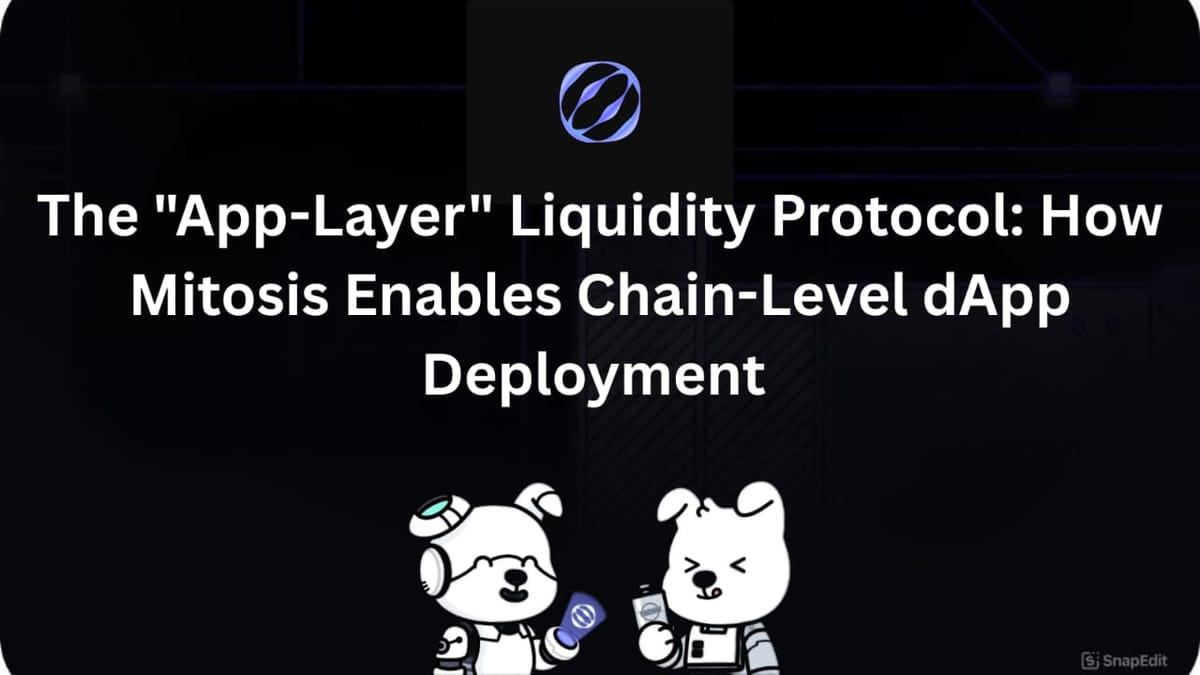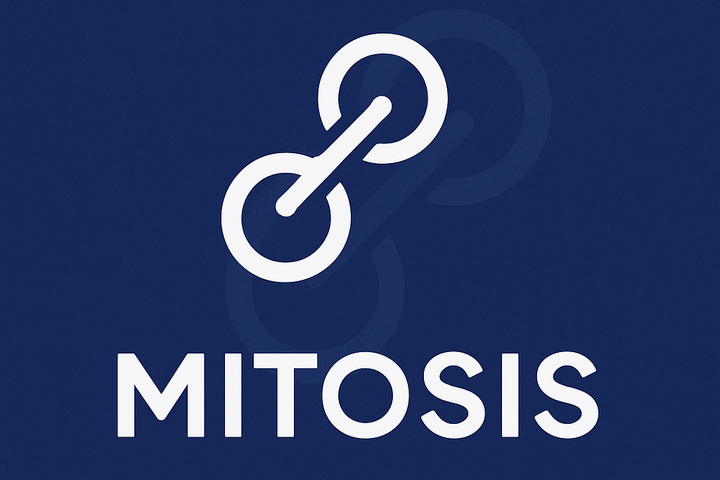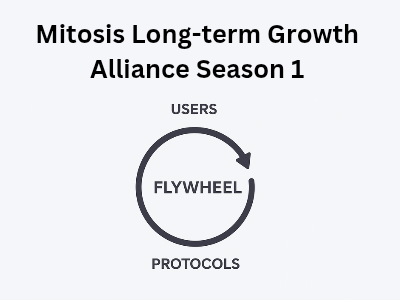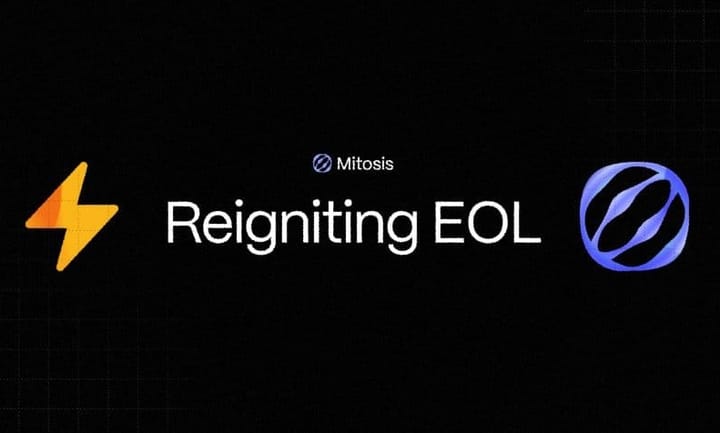The “App-Layer” Liquidity Protocol: How Mitosis Enables Chain-Level dApp Deployment

Introduction
In the rapidly evolving landscape of decentralized finance (DeFi), the need for efficient liquidity solutions has never been more pressing. Traditional Automated Market Makers (AMMs) have served as the backbone of liquidity provision in decentralized exchanges, but they often come with limitations, particularly when it comes to scalability and interoperability. Enter Mitosis, a groundbreaking liquidity protocol that not only enhances decentralized applications (dApps) but also empowers entire blockchain networks to access shared liquidity. This article delves into the intricacies of the Mitosis protocol, exploring its implications for chain-native liquidity, its role as a DeFi infrastructure for modular appchains, and real-world case studies that illustrate its transformative potential.
1. Understanding Mitosis: The Basics
Mitosis is a liquidity protocol designed to facilitate seamless liquidity sharing across multiple blockchain networks. Unlike traditional AMMs that operate within the confines of a single blockchain, Mitosis enables a more interconnected approach, allowing different chains to tap into a shared liquidity pool. This innovative model not only enhances the efficiency of liquidity provision but also fosters greater collaboration among blockchain ecosystems.
1.1. Key Features of Mitosis
- Shared Liquidity Pools: Mitosis allows multiple chains to access a common liquidity pool, reducing fragmentation and increasing capital efficiency.
- Interoperability: By enabling cross-chain interactions, Mitosis promotes a more interconnected DeFi ecosystem, allowing assets to move freely between different blockchain networks.
- Modular Architecture: Mitosis is designed to be modular, allowing developers to build and deploy dApps that can leverage its liquidity infrastructure without the need for local AMMs.
- Chain-Level Integration: Chains can integrate Mitosis directly into their architecture, enabling them to offer liquidity services natively without relying on external protocols.
2. Chain-Native Liquidity Without Local AMMs
One of the most significant advantages of Mitosis is its ability to provide chain-native liquidity without the need for local AMMs. Traditional AMMs require liquidity providers to deposit assets into a specific pool, often leading to inefficiencies and high slippage during trades. Mitosis addresses these issues by allowing chains to access a shared liquidity pool, which can be utilized by all dApps operating on that chain.
2.1. Benefits of Chain-Native Liquidity
- Reduced Slippage: By tapping into a larger liquidity pool, dApps can offer users better prices and reduced slippage during trades.
- Lower Capital Requirements: Developers can build dApps without needing to create their own liquidity pools, significantly lowering the capital requirements for launching new projects.
- Enhanced User Experience: Users benefit from a more seamless trading experience, as they can access a wider range of assets and liquidity options without navigating multiple AMMs.
- Increased Adoption: With lower barriers to entry, more developers are likely to build on chains that utilize Mitosis, leading to increased adoption and network effects.
3. Mitosis as a DeFi Infrastructure for Modular Appchains
The rise of modular appchains has transformed the blockchain landscape, allowing developers to create specialized chains tailored to specific use cases. Mitosis serves as a vital infrastructure component for these appchains, providing them with the liquidity necessary to thrive in a competitive DeFi environment.
3.1. The Role of Mitosis in Modular Appchains
- Liquidity as a Service: Mitosis can be viewed as a "liquidity as a service" model, where appchains can leverage its shared liquidity pools to enhance their offerings without the overhead of managing local AMMs.
- Inter-Chain Collaboration: By facilitating cross-chain liquidity sharing, Mitosis encourages collaboration among appchains, leading to innovative use cases and enhanced user experiences.
- Scalability: As appchains grow in popularity, Mitosis provides a scalable solution for liquidity provision, allowing chains to expand their offerings without being constrained by local liquidity limitations.
- Ecosystem Growth: The integration of Mitosis into modular appchains can lead to a more vibrant DeFi ecosystem, as developers are incentivized to create new dApps that can tap into the shared liquidity.
4. Case Studies: What a “Mitosis-Powered” Appchain Would Look Like
To better understand the potential of Mitosis, let’s explore a few hypothetical case studies that illustrate how a Mitosis-powered appchain could operate.
4.1. Case Study 1: A Gaming Appchain
Imagine a gaming-focused appchain that allows developers to create and deploy blockchain-based games. By integrating Mitosis, this appchain can offer players access to a shared liquidity pool that includes in-game assets, NFTs, and tokens from various games.
4.2. Key Features:
- Cross-Game Asset Trading: Players can trade assets from different games seamlessly, enhancing the overall gaming experience.
- Reduced Barriers for Developers: Game developers can launch their titles without the need to establish their own liquidity pools, allowing them to focus on game development rather than liquidity management.
- Dynamic In-Game Economies: The shared liquidity pool enables dynamic pricing and trading of in-game assets, creating a more engaging and economically viable environment for players.
4.3. Case Study 2: A DeFi-Focused Appchain
Consider a DeFi appchain that aims to provide a suite of financial services, including lending, borrowing, and yield farming. By leveraging Mitosis, this appchain can access a vast liquidity pool that supports various assets and tokens.
4.4. Key Features:
- Instant Liquidity Access: Users can access liquidity for their trades and loans without waiting for liquidity providers to deposit assets into local pools.
- Cross-Chain Yield Farming: Users can stake assets from different chains in the shared liquidity pool, earning rewards from multiple sources and increasing their potential returns.
- Interoperable Financial Products: The appchain can offer innovative financial products that utilize assets from various chains, enhancing the diversity of investment opportunities.
- Risk Mitigation: By accessing a larger liquidity pool, the appchain can better manage risks associated with price volatility and liquidity shortages.
4.5. Case Study 3: A Social Media Appchain
Imagine a social media appchain that allows users to create and share content while earning rewards in the form of tokens. By integrating Mitosis, this appchain can facilitate the trading of tokens and digital assets across different social media platforms.
4.6. Key Features:
- Tokenized Content: Users can tokenize their content, allowing for easy trading and monetization across the platform and beyond.
- Shared Rewards Pool: Content creators can benefit from a shared rewards pool, where users can stake tokens to support their favorite creators, enhancing community engagement.
- Cross-Platform Interactions: Users can interact with content and assets from other social media platforms, creating a more interconnected social experience.
- Enhanced User Retention: By providing users with multiple ways to earn and trade tokens, the appchain can improve user retention and engagement.
- Community Engagement: Players can participate in governance decisions regarding the liquidity pool, fostering a sense of community and ownership.
5. Technical Architecture of Mitosis
To fully appreciate the capabilities of Mitosis, it’s essential to understand its technical architecture. Mitosis is built on a modular framework that allows for easy integration with various blockchain networks. Here are some key components of its architecture:
1. Liquidity Layer
The liquidity layer is the core of the Mitosis protocol, where shared liquidity pools are managed. This layer is responsible for aggregating liquidity from multiple sources and ensuring that it is accessible to all connected chains and dApps.
2. Interoperability Protocol
Mitosis employs an interoperability protocol that facilitates seamless communication between different blockchain networks. This protocol ensures that assets can be transferred and traded across chains without friction, enabling a truly interconnected DeFi ecosystem.
3. Smart Contracts
Smart contracts play a crucial role in the Mitosis protocol, automating the processes of liquidity provision, asset trading, and governance. These contracts are designed to be secure and efficient, minimizing the risk of exploits and ensuring that transactions are executed as intended.
4. Governance Mechanism
Mitosis incorporates a decentralized governance mechanism that allows stakeholders to participate in decision-making processes. Token holders can vote on proposals related to liquidity management, protocol upgrades, and other critical aspects of the ecosystem.
5. User Interface
To enhance user experience, Mitosis provides a user-friendly interface that allows developers and users to interact with the protocol easily. This interface includes tools for managing liquidity, trading assets, and participating in governance.
6. Challenges and Considerations
While Mitosis presents a promising solution for enhancing liquidity in the DeFi space, it is not without its challenges. Here are some considerations that developers and stakeholders should keep in mind:
1. Security Risks
As with any DeFi protocol, security is a paramount concern. The shared liquidity model introduces potential vulnerabilities, such as smart contract exploits and cross-chain attacks. Rigorous security audits and ongoing monitoring are essential to mitigate these risks.
2. Regulatory Compliance
The evolving regulatory landscape for cryptocurrencies and DeFi poses challenges for protocols like Mitosis. Ensuring compliance with local regulations while maintaining the decentralized ethos of the protocol will require careful navigation.
3. Market Volatility
The DeFi space is known for its price volatility, which can impact liquidity provision and trading activities. Mitosis must implement mechanisms to manage volatility and protect users from significant losses.
4. User Education
As Mitosis introduces new concepts and functionalities, user education will be crucial for widespread adoption. Providing resources and support to help users understand how to leverage the protocol effectively will be essential.
Conclusion
The Mitosis liquidity protocol represents a significant advancement in the DeFi landscape, offering a novel approach to liquidity provision that transcends the limitations of traditional AMMs. By enabling shared liquidity across multiple blockchain networks, Mitosis not only enhances the efficiency of decentralized applications but also fosters a more interconnected and collaborative DeFi ecosystem.
The Future of Mitosis and DeFi
As the DeFi space continues to evolve, the potential applications of Mitosis are vast. Here are some future trends and developments that could shape the trajectory of the Mitosis protocol and its impact on the broader blockchain ecosystem:
1. Expansion of Use Cases
As more developers and projects recognize the benefits of shared liquidity, we can expect an expansion of use cases for Mitosis. Beyond gaming, DeFi, and social media, sectors such as supply chain management, identity verification, and decentralized governance could leverage Mitosis to enhance their liquidity and user engagement.
2. Integration with Layer 2 Solutions
The rise of Layer 2 scaling solutions, such as Optimistic Rollups and zk-Rollups, presents an opportunity for Mitosis to further enhance its liquidity offerings. By integrating with these solutions, Mitosis can provide faster and cheaper transactions, making it even more attractive for developers and users.
3. Enhanced Interoperability Standards
As the demand for cross-chain interactions grows, Mitosis may play a pivotal role in establishing new interoperability standards. Collaborating with other protocols and organizations to create a unified framework for cross-chain liquidity could lead to a more cohesive DeFi ecosystem.
4. Decentralized Governance Evolution
The governance model of Mitosis will likely evolve as the protocol matures. Engaging the community in decision-making processes and implementing innovative governance mechanisms, such as quadratic voting or delegated voting, could enhance stakeholder participation and ensure that the protocol remains aligned with the interests of its users.
5. Focus on User Experience
As competition in the DeFi space intensifies, user experience will become a critical differentiator. Mitosis will need to prioritize user-friendly interfaces, educational resources, and responsive support systems to attract and retain users. Simplifying the onboarding process for new users and providing clear guidance on how to leverage the protocol will be essential for widespread adoption.
Resources and Further Reading
To gain a deeper understanding of Mitosis and its implications for the DeFi landscape, consider exploring the following resources:
- Mitosis Whitepaper: The official whitepaper provides an in-depth overview of the protocol's architecture, features, and use cases. Read the Mitosis Whitepaper
- DeFi Research Reports: Various research firms publish reports on the state of DeFi, including trends, challenges, and opportunities. Look for reports from firms like Messari, Delphi Digital, and CoinGecko.
- Blockchain Interoperability: Explore resources on blockchain interoperability to understand the challenges and solutions in connecting different blockchain networks. Learn more about Interoperability
- Security Best Practices: Familiarize yourself with security best practices in DeFi to understand how to protect your assets and mitigate risks. Read about DeFi Security
- Community Forums and Discussions: Engage with the Mitosis community on platforms like Discord, Reddit, and Telegram to stay updated on developments and share insights with other users and developers.
Final Thoughts
Mitosis represents a paradigm shift in how liquidity is approached within the DeFi ecosystem. By enabling shared liquidity across multiple chains, it not only enhances the efficiency of dApps but also fosters collaboration and innovation among blockchain networks. As the DeFi landscape continues to evolve, Mitosis has the potential to become a cornerstone of a more interconnected and user-friendly financial ecosystem.
The journey of Mitosis is just beginning, and its success will depend on the collective efforts of developers, users, and stakeholders who are committed to building a more inclusive and efficient DeFi landscape. As we look to the future, the possibilities are endless, and the impact of Mitosis could redefine the way we think about liquidity in the blockchain space.



Comments ()